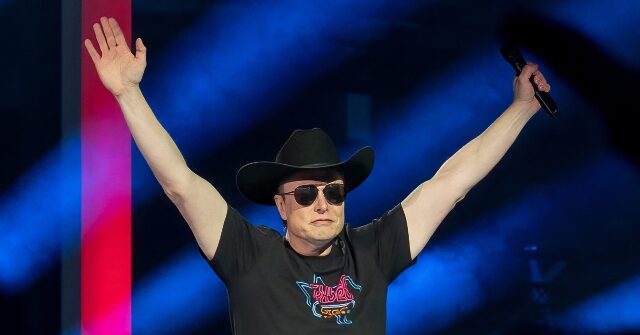Tesla CEO Elon Musk has revealed that the EV giant’s robotaxi service is set to begin operations in Austin, Texas, on June 22, with the first driverless trip scheduled for his birthday on June 28.
CNBC reports that Tesla CEO Elon Musk announced on Tuesday that the company’s robotaxi service is tentatively set to launch in Austin, Texas, on June 22. Musk, who shared the news on social media platform X, stated that he would be flying from Los Angeles to Austin for the kickoff event.
The launch of a robotaxi service marks a major milestone for Tesla, which has been working on developing its autonomous driving technology for several years. Musk had previously indicated that a limited robotaxi pilot would commence in Austin sometime in June, but had not provided a specific date until now.
According to Musk, the first driverless Tesla will make a trip from the company’s Austin factory to a customer’s house on June 28, coinciding with the tech billionaire’s birthday. He emphasized that Tesla is being “super paranoid” about safety and that the launch date could potentially shift if necessary.
Earlier on Tuesday, Musk shared an eight-second video on X demonstrating Tesla’s testing of driverless vehicles on the roads of Austin without a human safety supervisor behind the wheel. The clip featured the latest version of the Model Y SUV, painted black with a white “Robotaxi” graffiti-style logo, navigating an intersection and pausing to allow pedestrians to cross the street.
In a recent interview with CNBC’s David Faber, Musk revealed that the initial rollout of the robotaxi service will be very small, involving approximately 10 to 20 Model Y vehicles equipped with a new, “unsupervised” version of Tesla’s Full Self-Driving (FSD) technology. The futuristic-looking CyberCab, which Tesla plans to produce next year, will not be part of this initial pilot.
To ensure safety during the pilot phase, Tesla will implement “geofencing,” restricting the areas where the Model Y robotaxis can operate. Additionally, company employees will remotely monitor the fleet to address any potential issues that may arise.
Concerns remain about the limitations of Musk’s “Full Self-Driving” hardware and software. As Breitbart News previously reported, a FSD crash in Arizona highlights the weaknesses of the Tesla design, which uses cameras instead of sensors like LIDAR:
This tragic event has brought into question the capabilities and limitations of Tesla’s FSD technology, which relies heavily on cameras for perception, unlike many other autonomous driving systems that also incorporate radar and lidar sensors. Tesla CEO Elon Musk has defended the company’s camera-based approach, claiming that it can handle challenging conditions like sun glare and low-light environments. However, experts in the field have expressed concerns about the lack of redundancy and the potential vulnerability of camera-only systems.
The incident has also raised questions about Tesla’s aggressive push to deploy driverless vehicles, with the company planning to launch a robotaxi service in Austin, Texas, later this month. The National Highway Traffic Safety Administration (NHTSA) has sent a letter to Tesla requesting details about the company’s plans, including information on the driving systems, sensors, and safety measures in place to handle reduced visibility conditions.
Read more at CNBC here.
Lucas Nolan is a reporter for Breitbart News covering issues of free speech and online censorship.
Read the full article here


